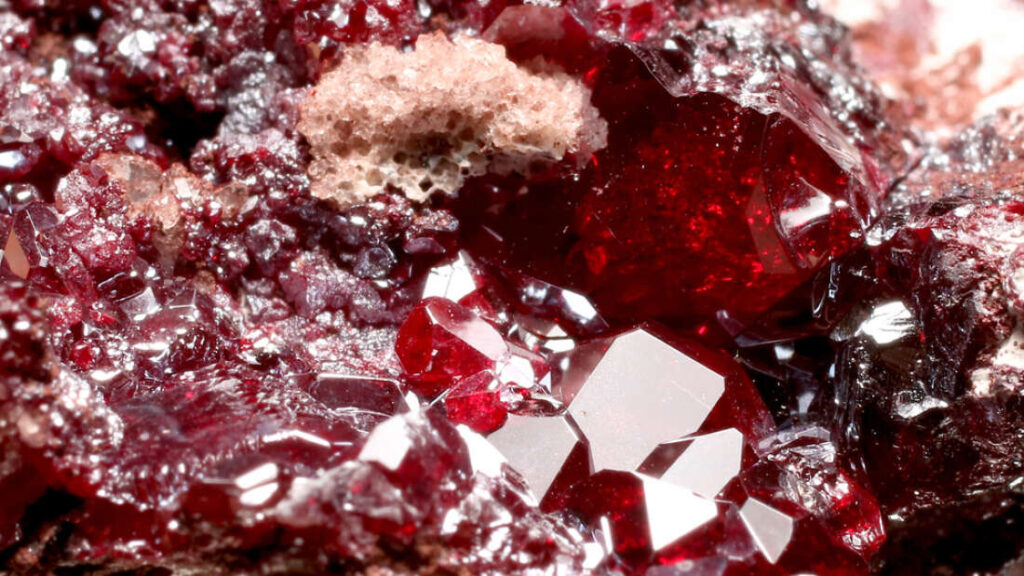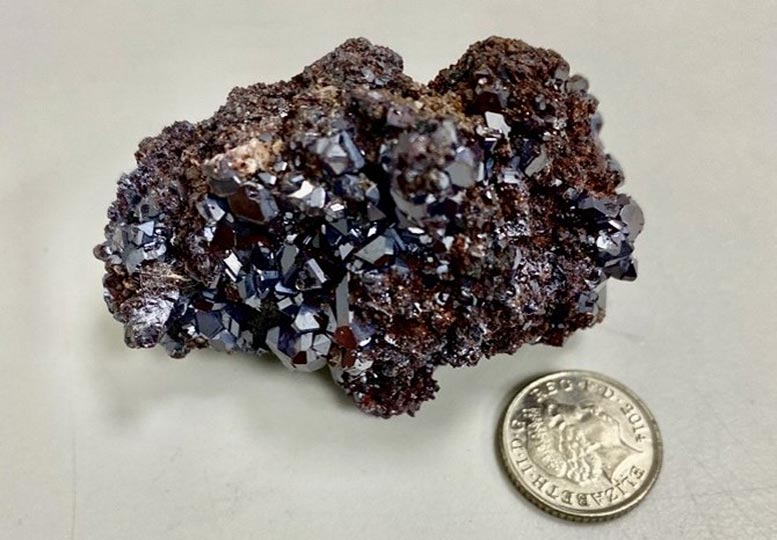Ancient and Rare Namibian Gemstone May Be the Key to Quantum Computers of the Future

Researchers are always on the lookout for materials that can succeed silicon as a material for semiconductors. Considering that silicon is second in abundance to oxygen, researchers still want to find materials for quantum computing, which is more demanding than traditional computing.
A promising new material
According to the new research published in Nature Materials, a team led by Scotland’s University of St. Andrews, in collaboration with Harvard University (U.S.), Macquarie University (Australia), and Aarhus University (Denmark), using a naturally mined cuprite gemstone (cuprous oxide – Cu2O) from Namibia. The gemstone produces Rydberg polaritons, the largest hybrid particles of matter and light.
Rydberg polaritons continuously switch from light to matter and vice versa. Light and matter are like two sides of a coin in Rydberg polaritons, which interact with each other through the matter side. The interaction is vital, as this allows the creation of quantum simulators, where you can store more information too large for a traditional computer to handle. Quantum computers function using light and matter: matter to store and process the information and allow the data to travel at the speed of light. A quantum computer can also simultaneously perform several processes.
The head of the project, Dr. Hamid Ohadi of the University of St. Andrews, School of Physics and Astronomy, said that creating a quantum simulator with light is akin to science’s holy grail. They made bigger strides by creating the key ingredient, the Rydberg polaritons, vital to quantum simulators.
Creating the Rydberg polaritons
The researchers created the Rydberg polaritons by trapping light between two highly reflective mirrors. They thinned and polished a cuprous oxide crystal (cuprite) mined in Namibia to a 30-micrometer thin slab, which is much thinner than a human hair strand, and placed it between the two mirrors. The sandwiching made the Rydberg polaritons 100 percent larger.
Another challenge the researchers faced was making the Rydberg polaritons exist in an exceedingly tighter color range.
Currently, the research team is refining the methods further to explore the probability of developing quantum circuits, the next vital component for the creation of quantum simulators.
Using cuprite or cuprous oxide
The collaborative team of researchers from different universities in the UK, U.S., Denmark, and Australia used an ancient gemstone known as cuprite, which forms from cuprous oxide, to produce the largest hybrid particles of matter and light today. They created the quasiparticles or Rydberg polaritons using cuprite. The material cuprite is a rare gemstone found in Namibia that contains cuprous oxide. Namibia is one of the few places where cuprite is of gemstone quality.
As mentioned, the gemstone is rare. One of the few mines that produce excellent cuprite is the Onganja mine in Namibia. However, it was flooded and closed for several years. Actually, the researchers bought the cuprous oxide they used for their experiments from eBay. Cuprite is a superconductor. The gemstone contains extra large Rydberg excitons, which form the Rydberg polaritons when combined with photons. Physicists have studied cuprite for many years because its semiconducting properties are essential for many applications.
The researchers are excited by the result of their experiments. Rydberg polaritons are unique because they can continuously switch from matter to light. Light particles move quickly, but they do not interact with one another. On the other hand, matter moves slowly, but they can interact. The potential to unlock quantum computers’ potential is by putting the two abilities of the Rydberg polaritons together.
Putting these two abilities together could help unlock the potential of quantum computers. The flexibility that users get is critical in managing quantum states. Although the researchers admit that building a fully functional computer using this technology is not yet within reach, the results show that they are close to making one.
